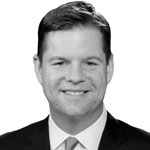The safety of our neighborhoods will always be a huge priority for me personally; it affects residents of every age, and I believe it is one of the core services our city government provides. And though our local economy is kicking on all cylinders, crime has been increasing in our neighborhoods. So this month I wanted to lay out some of the raw data and actions we are collectively taking in City Hall including some I have personally championed.
Though property crime has been increasing, we are fortunate to have great leadership in our Police Department, including Chief Greg Suhr and Capt. Greg McEachern, who runs Northern Station (covering a significant part of District 2, including the Marina, Cow Hollow, and most of Pacific Heights). We all share the opinion that the increase in property crime is unacceptable, and I am a huge believer in their leadership and believe they continue to do an incredible job for our neighborhoods.
As of November 2013, crime was at a five-year high in San Francisco, with double-digit increases in both thefts and robberies; though the city’s homicide rate is still lower than what is was five years ago, this trend in property crime is extremely concerning. The vast majority of crimes were property-related, such as auto break-ins, thefts, and robberies. Our San Francisco Police Department attributed the sharp increase to the plethora of smartphones, tablets, and other electronic devices that remain easy and lucrative targets for thieves.
In District 2, violent crime (which includes homicide, rape, robbery, and aggravated assault) is actually down by 28 percent compared to last year. However, within the jurisdiction of the Northern Police Station, both property crimes including burglaries and auto thefts continue to rise from last year.
One of the most surprising things I learned during my first year as supervisor in 2011 was that City Hall had not funded a single Police Academy class in five years. Combined with record numbers of police officer retirements during the same time period, since 2011 we have experienced some of the lowest Police Department staffing levels in a generation.
In addition, in 2011, the U.S. Supreme Court ruled on a case concerning overcrowding in California prisons, and ordered California to decrease our prison population. It is only common sense that the combined effect of the lowest police staffing levels in decades and more low-level property criminals on our streets would result in more property crime in our neighborhoods, which is exactly what has happened. The Public Policy Institute of California studies the issue and found “robust evidence that realignment is related to increased property crime.” San Francisco has not been immune.
The good news is that since 2011, this Board of Supervisors has prioritized public safety and has committed to adding more Police Academy classes and returning the Police Department to its mandated staffing levels. My first two years in office, we funded two Police Academy classes each year, and since I became chair of our Budget and Finance Committee, we have funded three Police Academy classes each year, which is the maximum annual capacity. Mayor Lee has
committed to continue this in-creased funding through 2016, which will provide a significant boost to staffing levels. Locally, with increased staffing, Captain McEachern has indicated he will increase his plainclothes street crimes unit and two of Northern Station’s foot beats will be reinstituted.
I’m also a firm believer that we are better off as San Francisco residents if our public safety officers are both working and living in the city. Unfortunately because of the high cost of living, many public safety officers choose to live elsewhere and after their shift ends, they leave town. I believe our neighborhoods are safer on a daily basis with public safety officers in our midst, and in case of emergencies and natural disasters (it is a matter of “when” not “if” the next big earthquake will strike) we need these officers living within our city limits, not across bridges that will in all likelihood be inaccessible. Thus, I authored a down-payment assistance program for public safety officers, which loans up to $100,000 to public safety officers buying homes in San Francisco. This program has been incredibly successful, and is just a start and step in the right direction.
Within District 2, we have also held a number of public safety community meetings to facilitate interaction between our residents and the Police Department.
While our trusted public safety officers continue to train new officers and replenish their units, it is incumbent that we work together as a community. Always be aware of your surroundings, do not hesitate to report anything suspicious or certainly if you see crime in action. I firmly believe in the “broken window theory,” meaning we have to be vigilant about all quality of life issues (such as litter, graffiti, homelessness, etc.) so that more serious crimes aren’t committed.
One step a number of our neighborhoods have taken is to form neighborhood watch groups. If you and your neighbors are interested in forming a neighborhood watch group, please contact me and/or my City Hall team at mark.farrell@sfgov.org or at 415-554-7752. Neighborhood watch groups are formed with the assistance of an organization called San Francisco SAFE (Safety Awareness for Everyone, sfsafe.org). The SAFE team is incredibly hands-on, and their team will regularly come to neighborhood meetings, answer questions, help with paperwork. and deliver those famous neighborhood watch signs.
If you are interested, I would also highly suggest emailing Northern Station to sign up for their monthly newsletter, which has important safety tips and summaries of crimes committed in the area. The e-mail is [email protected].





